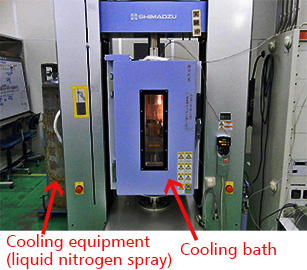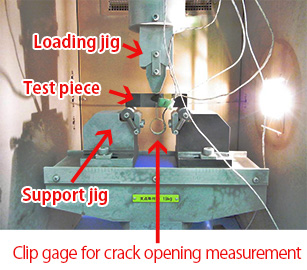Material Testing
CTOD (Crack Tip Opening Displacement) Test
In-page menu
About CTOD Test
When material with a defect is loaded, a crack will propagate rapidly originating from the defect, resulting in fracture at a certain temperature range (unstable fracture). CTOD test is one of test methods to determine fracture toughness (fracture resistance) of a material with a crack, and a test to determine crack tip opening displacement to generate unstable fracture (limit CTOD value). It is generally performed by loading a test piece on a 3-point bending system as shown in right figure.
JFE-TEC can provide a wide range of test specimen thickness from 6 mm to 100 mm, and accommodate test temperature from +200 ℃ to -196 ℃ (depending on the test specimen size).
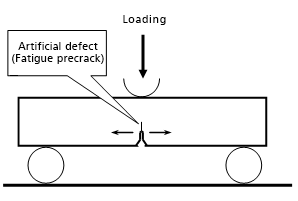
Outline of Test
Test Procedure
Preparation of test piece → Introduction of a fatigue precrack → CTOD testing → Appearance of fracture surface → Measurement of fracture surface → Evaluation → Preparation of report
We can provide one-stop service for the above procedure from test piece preparation to reporting.
Corresponding Standards
BS 7448 :Fracture mechanics toughness tests
ISO 12135 :Metallic materials - Unified method of test for the determination of quasistatic fracture toughness
ASTM E 1820 :Standard Test Method for Measurement of Fracture Toughness
WES 1108 :Standard Test Method for Crack Tip Opening Displacement (CTOD) Fracture Toughness Measurement
Equipment To Be Used
Autograph AG-250kNXplus (loading capacity: 250 kN) made by Shimadzu
Universal test machine (loading capacity: 500 kN) made by Shimadzu
Universal test machine (loading capacity: 2,000 kN) made by Tokyo Koki
Testing scenes (250 kN test machine)
Example of test
CTOD Test of Weld Heat Affected Zone (HAZ)
The following is a case example of the procedure: a notch was introduced at weld HAZ and CTOD test was performed.
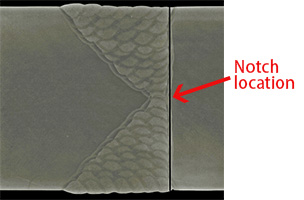
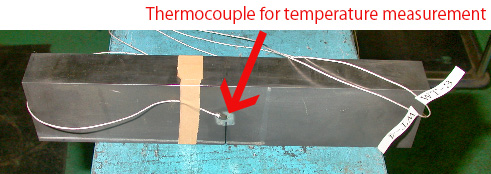
-
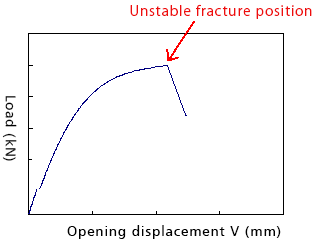
Load-opening displacement diagram obtained by CTOD test -
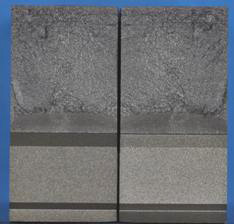
Fracture surface of test piece after the test



